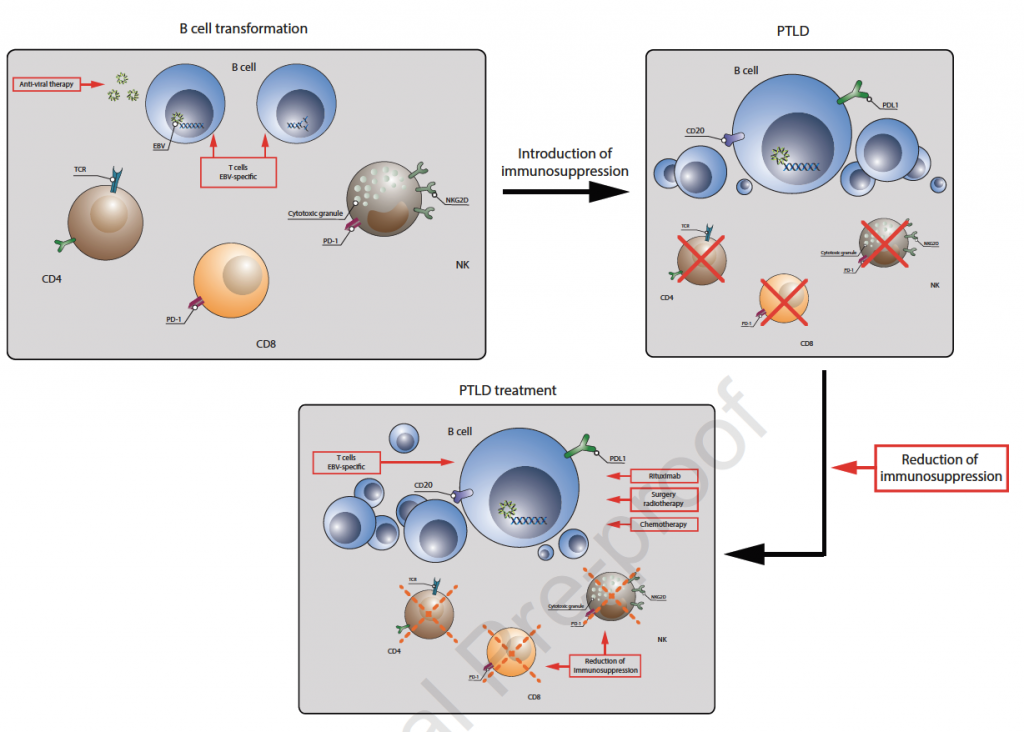Am J Kidney Dis. 2021 Mar 24:S0272-6386(21)00501-1. doi: 10.1053/j.ajkd.2021.01.015.
Abstract:
Post-transplant lymphoproliferative disorder (PTLD) is one of the most feared complications following kidney transplantation. Over a 10-year period, the risk of PTLD in kidney transplant recipients is 12-fold higher than in matched non-transplanted population. Given the number of kidney transplantations performed, kidney transplant recipients experiencing PTLD outnumber other organ transplant recipients who develop PTLD. EBV infection is one of the most important risk factors for PTLD, although 40% of PTLDs are not EBV-associated in contemporary series. The overall level of immunosuppression seems to be the most important driver of the increased occurrence of PTLD in solid organ transplant recipients. Reduction in immunosuppression is commonly accepted to prevent and treat PTLD. Although the cornerstone of PTLD treatment had been chemotherapy (typically CHOP), the availability of rituximab has changed the treatment landscape in the last two decades. The outcome of PTLD in KTR patients has clearly improved due to the introduction of more uniform treatment protocols, improved supportive care, increased awareness and use of positron emission tomography combined with computed tomography in both staging and response monitoring. In this review, we will focus on the most recent data on epidemiology, presentation, risk factors and management of PTLD in KTR.
Figure. Pathophysiology of PTLD.

